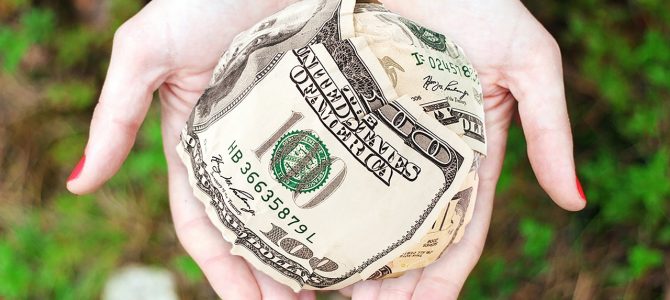
Investing in precious metals during a recession can be incredibly beneficial for investors. It’s an effective way to hedge against economic losses and boost the security of one’s portfolio.
In this article, we’ll explore why investing in gold, silver, platinum, or palladium is smart when times are tough economically.
When recessions hit, they often cause stock markets to crash and currencies to depreciate. This makes it difficult for investors to protect their portfolios from financial loss; however, investing in precious metals can help mitigate those risks. We recommend a 403b to gold IRA rollover in 2023 because of the rising inflation and increased risks associated.
Precious metals have held their value over time and tend to outperform other investments when economies tank. We’ll look at how these metals offer stability and potential growth opportunities despite challenging market conditions.
The History Of Precious Metals
The history of precious metals stretches back for thousands of years. They were used as a form of currency and store of value by many ancient civilizations, including those in China and Egypt.
Precious metals have always been seen as a reliable way to preserve wealth during times of economic instability or recession. In recent years, gold has become the most popular type of precious metal that investors turn to when looking to protect their wealth from market fluctuations caused by recessions.
Gold is generally considered one of the safest investments during an economic downturn because it tends to retain its value even if other asset prices fall sharply. Silver is also often viewed as a safe investment option, although it can be more volatile than gold due to supply-and-demand factors.
Investing in precious metals offers several advantages over stocks or bonds during a recession. It’s easy to buy and sell these assets, they require minimal storage space, and they are not subject to inflation like paper money or other forms of currency. Moreover, since demand for gold and silver typically rises when economies slow down, there is potential for profits even in difficult economic conditions.
What Makes Precious Metals Unique?
Precious metals have been used to store wealth for thousands of years. They are a symbol of power, status and beauty that has transcended time and culture.
Despite their long history, precious metals remain highly sought after today due to the unique properties they possess.
Unlike other commodities such as stocks or bonds, precious metals don’t fall victim to market manipulation because their values are based on tangible commercial uses like jewelry and electronics manufacturing. This means that even in times of economic turmoil, the prices of these assets will not suddenly drop drastically.
Additionally, gold is an excellent hedge against inflation since it tends to increase in value when the purchasing power of currency weakens over time.
It’s no surprise then why investors turn towards precious metals during a recession – they provide stability and protection from financial uncertainty while offering potential growth opportunities.
Furthermore, many consider them to be a safe haven asset class with minimal risk compared to traditional investments like stocks or mutual funds, making them ideal for those looking for a more secure way to grow their portfolio.
Diversifying Your 403b Account During A Recession
During a recession, investing in precious metals can provide an excellent way to diversify your portfolio. Gold and silver have historically been viewed as safe-haven investments during economic downturns; when stocks take a tumble, the prices of these two commodities often increase.
Precious metals are also tangible assets that you can physically hold onto, giving them more appeal than some of their paper counterparts such as stocks or bonds. In addition to providing stability and liquidity during times of market volatility, gold and silver may also offer potential tax benefits depending on how they’re held.
For example, if you purchase bullion coins from an authorized dealer, then any profits made when selling those coins could be subject to long-term capital gains tax rates instead of higher income tax rates. While other investment vehicles may not come with this kind of flexibility, there is still value in having precious metals as part of your overall investment strategy.
Investing in physical gold and/or silver can help protect against inflation or currency devaluation because these commodities tend to retain their intrinsic values over time— unlike certain currencies which may depreciate quickly due to political or economic factors beyond our control. By adding precious metals into your portfolio mix, you’re taking steps towards ensuring greater financial security for yourself now and in the future.
The Benefits Of Investing In Precious Metals
As the stock market continues to fluctuate during a recession, it is important for investors to diversify their portfolios in order to protect their investments. One way of doing this is by investing in precious metals such as gold and silver. These materials have been used as currency since ancient times, making them an attractive option for long-term growth and stability.
Here are some of the benefits that come along with investing in precious metals:
*Increased Value:
- Precious metals tend to increase in value over time due to their finite supply, meaning they can be bought at low prices now but sold at higher prices later on.
- During times of economic uncertainty or instability, these values typically rise even further as people search for safe havens for their money.
- This makes them desirable investments when faced with volatility in other markets like stocks and bonds.
*Protection Against Inflation:
- Investing in physical gold or silver provides protection against inflation because its value will not decrease drastically if there is a sudden change in interest rates or economic policies.
- Precious metals also provide a hedge against currencies that might be devalued due to government actions or global events.
- For example, owning gold gives you access to liquidity since it has universal value regardless of where you live or which currency you use.
*Diversification Benefits:
- By investing some of your portfolio into precious metals, you can achieve greater diversification and reduce risk across different asset classes.
- Gold and silver have historically maintained their purchasing power through all kinds of monetary crises, so they are seen as reliable stores of wealth compared to paper assets like stocks and bonds.
- Furthermore, depending on the size of your investment, they may even offer tax advantages over certain types of securities because capital gains taxes do not apply until profits reach certain thresholds.
Investing in precious metals offers many potential rewards for those looking for alternative ways to manage their wealth during a period of uncertainty. With increased value protection from inflation, and impressive diversification benefits – it’s no wonder why many choose these tangible goods as part of their overall financial strategy.
Conclusion
In conclusion, investing in precious metals during a recession can be beneficial for diversifying your portfolio and providing security against stock market uncertainty.
With their unique properties and long history of being used as a store of value, gold and silver have been proven to hold up well even when other investments decline.
Investing in precious metals during times of economic turmoil is an effective way to protect your assets while also benefiting from potential upside gains as the economy recovers.

